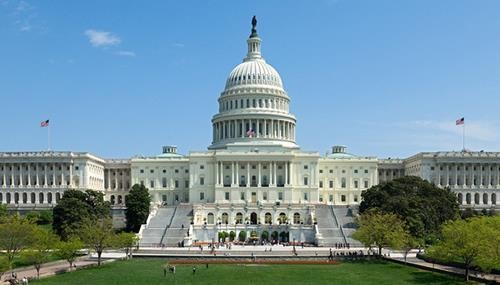It is easy to forget that this election is about more than just the next president. The United States Congress, composed of the Senate and the House of Representatives, will also transition in just a few weeks.
Though Senators and Representatives don’t spend most of their days in the White House, they are just essential as whoever will be in the Oval Office. If the next president’s own political party controls Congress, it will likely be easier for them to pass legislation. However, if say, Hillary Clinton was elected and Congress remained a Republican majority, her job wouldn’t be so easy.
Currently, the 114th Congress is composed of a Republican Senate and House majority, a first for the party since the 109th Congress between 2005 and 2007 under George W. Bush. Moreover, this is the widest Republican majority since the 71st Congress serving between 1929 and 1931.
Congress is composed of 100 Senators, 435 Representatives and 6 non-voting members. Currently, there are 54 Republican seats in Senate, 44 Democrat seats and 2 Independents. Of the House seats, 188 are Democrats while 246 are Republican.
In order for Democrats to have to take over the House, they would need to have a net gain of 30 seats, which is largely viewed as unlikely. However, there may not be as great of an imbalance in the next House. If Democrats begin taking more seats, it could weaken House Speaker Paul Ryan who will likely run again for his position.
As far as the Senate, things might come closer. Currently Real Clear Politics polls predict that there will be 47 Democrat and 47 Republican Senators, leaving six as toss ups. As 51 seats are needed for a majority, the battle for the Senate may be a tough fight this year. In the unlikely chance that Senate is evenly split, the acting Vice President would cast tiebreaker votes as the Constitution deems that person the President of the Senate. The only Senate that was ever split evenly was the 107th Congress between 2001 and 2003. In that time, there were three changes in majorities.
The Democrats have not controlled all three branches—legislative, executive and judicial—since the 1960s. Though the Democrats controlled Congress in President Obama’s first two years, the Republicans had a slight majority on the Supreme Court. Since 1945, the President and Congress have been politically at odds all but 13 times. In addition, the House and Senate have only been had opposing political majorities seven times since 1945. Three of those seven times have been in time since the 2000 election.
The Constitution sets up the nation’s government to have checks and balances between the three branches of government. This balance of power is essential the democracy as no one person can control every decision. As this remains a close battle for both the presidency and the Senate, every vote matters.







